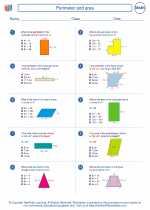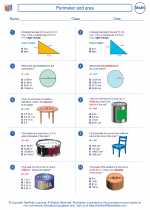Function Notation: Explanation and Study Guide
What is a Function?
A function is a relationship or rule that assigns each input (or value from the domain) to exactly one output (or value in the range). In other words, for each input, there is only one output. Functions are commonly denoted by the symbol "f".
Function Notation
Function notation is a way to represent functions using symbols and variables. It is commonly used to define, evaluate, and manipulate functions. Function notation typically involves the use of the function name followed by parentheses containing the input value. The general form of function notation is f(x), where f is the function name and x is the input value.
Using Function Notation
When using function notation, the input value (or independent variable) is substituted into the function to find the corresponding output value (or dependent variable). This is done by replacing x with the specific input value inside the parentheses.
Example:
Given the function f(x) = 2x + 3, to find the value of f(4), we substitute 4 for x in the function:
f(4) = 2*4 + 3 = 8 + 3 = 11
So, f(4) = 11.
Study Guide
When studying function notation, it's important to understand the following key concepts:
- Understanding the meaning of function notation and its purpose in representing functions.
- Practicing substitution of input values into functions using function notation to find output values.
- Recognizing the difference between the function name and the input variable in function notation.
- Applying function notation in various mathematical problems and real-world scenarios.
- Understanding the relationship between the domain, range, input, and output of a function within the context of function notation.
Summary
Function notation is a powerful tool for representing and working with functions. By using symbolic notation, functions can be defined, evaluated, and manipulated more efficiently. Understanding function notation is essential for mastering the concept of functions in mathematics.
.◂Math Worksheets and Study Guides Eighth Grade. Perimeter and area

 Worksheet/Answer key
Worksheet/Answer key
 Worksheet/Answer key
Worksheet/Answer key
 Worksheet/Answer key
Worksheet/Answer key
 Worksheet/Answer key
Worksheet/Answer key
